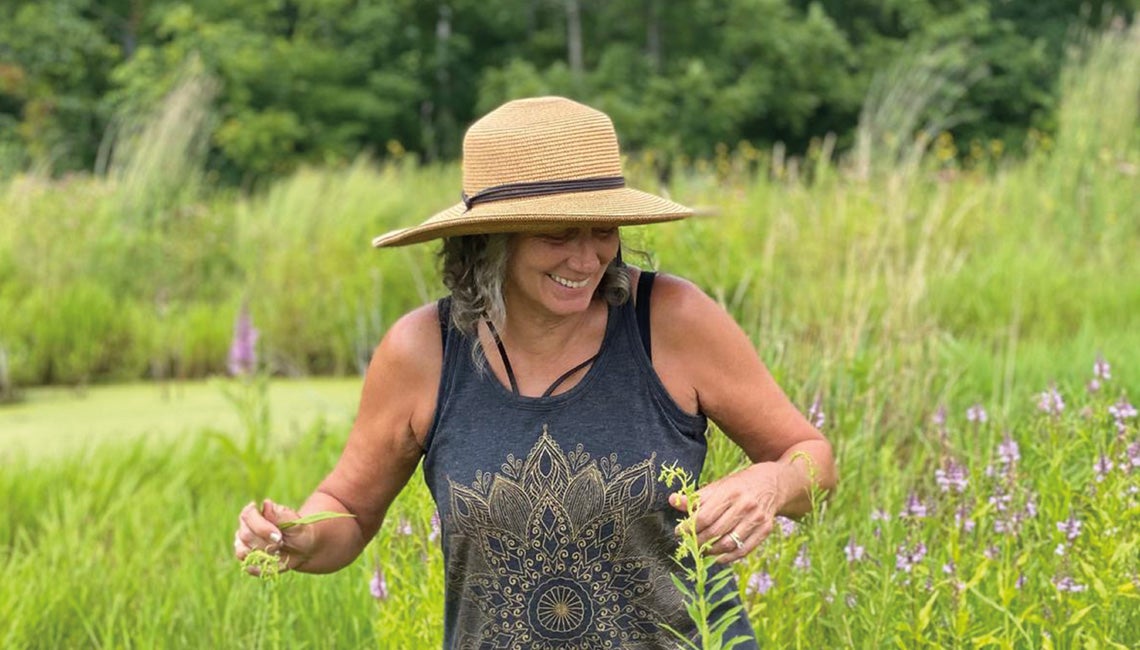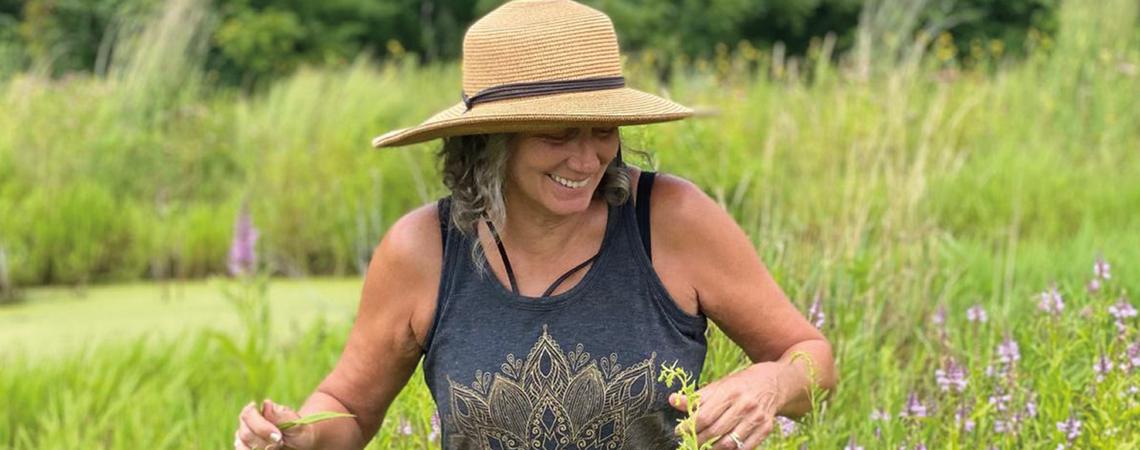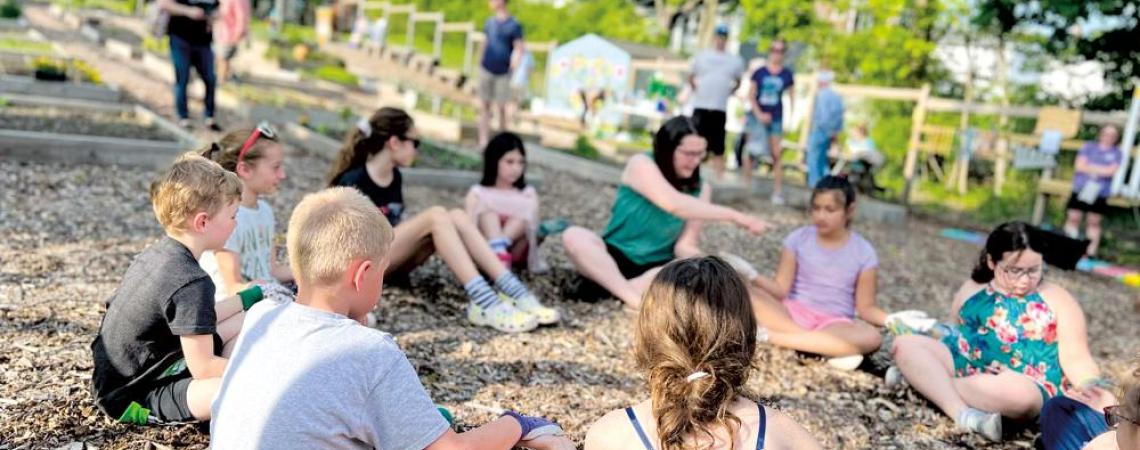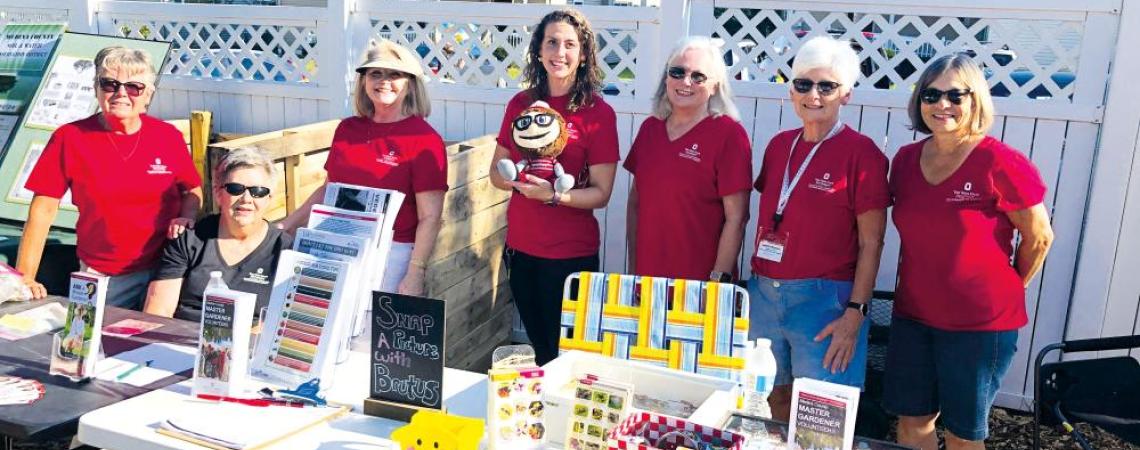Jackie Driscoll paints her landscape with a palette of colors from native plants.
Driscoll, a member of Lorain-Medina Rural Electric Cooperative, is a master gardener volunteer (MGV). She’s turned 8 acres of a former crop field into a stunning pollinator garden, and from spring through fall, bees, birds, and butterflies swoop down to enjoy and benefit from spiderwort, false foxglove, golden Alexandria, asters, coneflowers, sunflowers, ironweed, and more types of native flowering plants (or “forbs”). The prairie also has half a dozen species of native grasses.
Driscoll also has a kitchen garden of herbs and several flower gardens around her house. She tucks a few vegetables here and there into the flower gardens.
Jackie Driscoll explores her 8-acre pollinator garden in Lorain County. A master gardener volunteer, she’d been gardening since she was 8.
Driscoll has been gardening since she was a child. Her mother, who kept gardening until she died at 88, planted the joy of gardening seed in her daughter, and it still flourishes.
Jackie and her husband, Brian, lived in a Cleveland suburb while their children were growing up. Their property was small, but Driscoll kept adding plants to it. “My husband finally said, ‘You have to leave some grass,’” she recalls.
In 2010, the Driscolls bought rural land outside Rochester Township near Wellington — and suddenly they had plenty of room for Jackie’s gardens. A few years later, with their five children now young adults, she had extra time on her hands.
“I was looking for something to do, to become involved with, once the kids were grown,” she says.
The Master Gardener Volunteer program seemed a good choice. Medina County’s training sessions worked best with Driscoll’s schedule, and in 2016 she began weekly classes there.
“I love taking [gardening] classes. I really do,” Driscoll says. “Master Gardeners has been a great fit for me because there’s always a class or conference I can go to and learn something more.”
Toward the end of the master gardening training, each student gave a presentation to the class. Driscoll and another student teamed up to tell their classmates about the native plant prairies they had planted at their homes.
“That’s a lot of what master gardeners do: give presentations to educate the community,” Driscoll says.
Driscoll particularly enjoys sharing her gardening knowledge with kids. At the Medina Parks Department’s Earth Day celebration, the master gardeners had a big demonstration table. “We talked about good bugs and bad bugs in your garden and how to use integrated pest management [instead of insecticides],” she says.
Driscoll has also answered the master gardeners’ hotline. This free service allows community members to call or email with gardening questions, to which the volunteer on duty provides research-based answers.
She also enjoys the social aspect of the program — learning and volunteering with like-minded people. “I’ve met so many nice people through Master Gardeners,” she says.
Driscoll is one of 53 Master Gardener Volunteers in Medina County. The group’s coordinator is Ashley Kulhanek, Extension Educator, Agriculture and Natural Resources, at Ohio State University. “We focus on education and outreach, not [providing] free garden labor,” Kulhanek says. “We do not just grow gardens. We grow gardeners.”
Earning the MGV certification requires 50 hours of class training and 50 hours of volunteer time. Kulhanek says the volunteers are encouraged to work on whatever type of gardening interests them most. “If you want to be outdoors and enjoy plants and nature, you can find your fit in the MGV program,” she adds.
For more information about the Master Gardener Volunteer program, contact your county extension agent or click here.
Ohio’s wider MGV program is directed by Pam Bennett, extension educator, horticulture, at Ohio State. According to Bennett, Ohio has more than 3,500 MGVs in 64 counties.
In 2020 Driscoll took out some aggressive native grasses to create an entirely forb field. “It should be full of glorious bloom this summer,” she says. “The old adage is that the first year [native] plants sleep [because all of their energy goes into developing deep root systems]. The second year they creep, and the third year they leap.”
For anyone thinking about becoming an MGV, Driscoll says, “If they enjoy learning and sharing their knowledge it’s a great program. You can choose an area of interest — we have several groups — and find like-minded people. It’s made me a better steward of the land we’re on. Our intentions were always good, but now we have the knowledge [to garden well and responsibly].”












